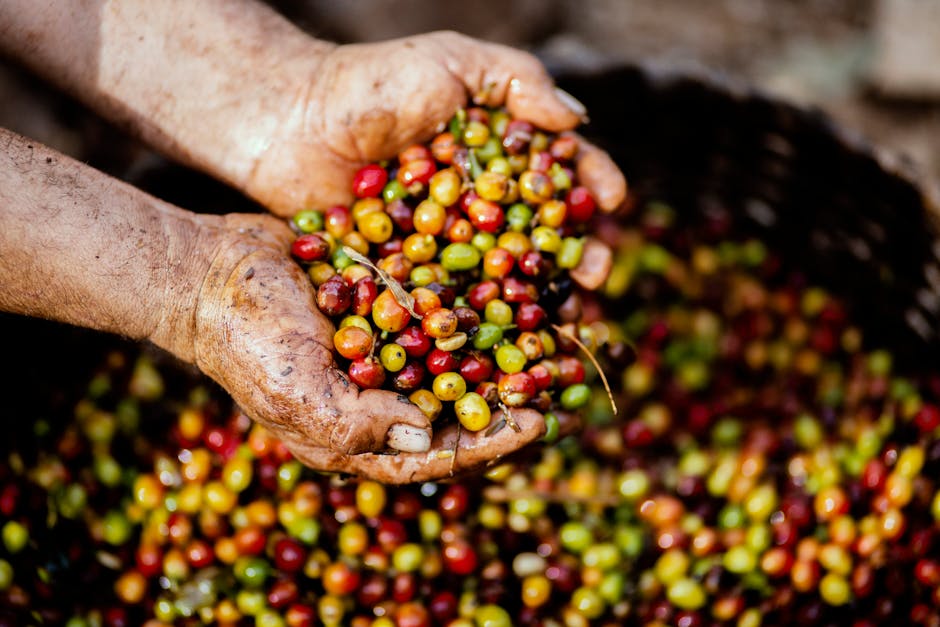Beginner Guide to Coffee Origins: Discover the Secrets Behind Your Morning Brew
Ah, coffee! That magical potion that kickstarts our day and powers us through countless tasks. But have you ever wondered where your morning brew comes from? Coffee is more than just a caffeinated drink; it’s a journey that begins far from your favorite café or kitchen. In this Beginner Guide to Coffee Origins: Discover the Secrets Behind Your Morning Brew, we’ll dive deep into the fascinating world of coffee, exploring its origins, the factors that influence its flavor, and how to make the most of your daily cup. So, grab your favorite mug and let’s get brewing!
The Journey of Coffee: From Bean to Brew
The story of coffee begins in the lush, mountainous regions near the equator, where the Arabica and Robusta coffee trees thrive. Let’s explore the two main types of coffee beans and their unique origins.
Arabica vs. Robusta
-
Arabica: This variety, known for its sweet, soft taste and higher acidity, makes up about 60-70% of the world’s coffee production. Arabica beans are predominantly grown in countries like Brazil, Colombia, and Ethiopia—regions with the right combination of altitude, climate, and soil conditions.
-
Robusta: In contrast, Robusta beans are hardier and can withstand harsher conditions, such as lower altitudes and higher temperatures. Often regarded as bitter and strong, Robusta accounts for about 30-40% of coffee production and is mainly cultivated in Vietnam, Indonesia, and parts of Africa.
Understanding the difference between these two types is essential in our Beginner Guide to Coffee Origins: Discover the Secrets Behind Your Morning Brew. Each variety brings its own flavor profile, influenced by its growing conditions and the way it’s processed after harvesting.
Discovering the Coffee Regions
The magic of coffee truly lies in its diverse origins. Each region imparts unique characteristics to the beans, creating various flavor profiles that cater to all kinds of coffee lovers. Here’s a brief overview of some of the world’s renowned coffee-growing regions.
1. Central and South America
-
Colombia: Known for its smooth and balanced flavor, Colombian coffee often has notes of caramel and nuts. The region’s ideal climate, high altitudes, and volcanic soil contribute to the beans’ exceptional quality.
-
Brazil: As the largest producer of coffee in the world, Brazil offers a wide range of flavors. Brazilian coffees are typically characterized by a chocolatey taste and low acidity, making them perfect for espresso blends.
2. Africa
-
Ethiopia: Often considered the birthplace of coffee, Ethiopian beans are renowned for their fruitiness and floral aromas. They often exhibit a tea-like quality, making them a favorite for adventurous coffee drinkers.
-
Kenya: Kenyan coffee is celebrated for its bright acidity and bold flavors. Often described as wine-like, these beans bring a unique twist with berry or citrus notes.
3. Asia
-
Vietnam: Known primarily for its Robusta beans, Vietnam produces a coffee that is rich and strong. The country has a growing specialty coffee scene, often using unique brewing methods like the traditional Vietnamese drip coffee.
-
Indonesia: With a diverse range of coffee beans, Indonesia produces everything from smooth Sumatra coffee to the intensely flavored Java beans. The unique wet-hulling processing method contributes to their earthy and complex profiles.
How Coffee Processing Affects Flavor
After harvesting, coffee beans must undergo processing, which plays a significant role in the flavor of your final brew. Here’s a quick rundown of the most common processing methods:
-
Washed (Wet) Process: This method involves fermenting the beans in water to remove the outer fruit layer before drying. This results in a clean and bright flavor profile, ideal for highlighting complex acidity.
-
Natural (Dry) Process: In this method, the coffee cherries are dried with the fruit still intact. This imparts fruitier flavors and a fuller body to the beans, making it a favorite among those who enjoy a bolder cup.
-
Honey Process: A hybrid of the two methods, honey processing involves removing some of the fruit but leaving a portion of the sticky residue. This method provides sweetness and body while maintaining acidity.
FAQs About Coffee Origins
Q: How can I tell the origin of my coffee?
A: Many coffee bags will indicate the country of origin prominently on the label. Look for specialty roasters that provide detailed information about the specific region and processing method.
Q: Does the brewing method affect flavor?
A: Absolutely! Different brewing methods (espresso, pour-over, French press, etc.) can greatly influence the resulting flavors and aromas. Experimenting with various methods can help you find your favorite taste profile.
Q: Why does coffee from different regions taste different?
A: Environmental factors such as altitude, soil type, and climate, along with processing methods, contribute to the distinct flavors of coffee beans. Each region’s unique combination creates a signature taste.
Conclusion
Coffee is a wondrous beverage that connects us to its origins across the globe. Whether you enjoy a fruity Ethiopian brew or a strong Vietnamese cup, understanding the journey your coffee takes from bean to brew enhances your appreciation for this beloved drink. In this Beginner Guide to Coffee Origins: Discover the Secrets Behind Your Morning Brew, we’ve uncovered the different coffee varieties and regions, processing methods, and how they all work together to create the flavors we know and love.
Next time you sip your morning coffee, take a moment to appreciate the intricate journey behind it. You might just find a new appreciation for your brew—and perhaps you’ll be inspired to explore more! Happy brewing!


